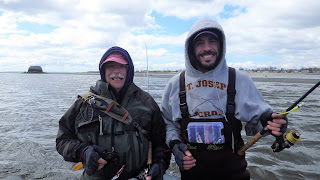CDC Micro Bugger
Hook: Hanak H 400 BL #10.
Thread: Semperfli 12/0 waxed
in Shell Pink.
Bead: Tungsten Slotted Light Pink in 4.0 mm.
Tail: Wooly Bugger Marabou in Shell Pink.
Body: Ice Dub Fluorescent Shell Pink.
Hackle: CDC in Pink.
I love flies like this.
You can fish them Euro-nymphing or as a streamer. There certainly isn’t anything wrong with big
articulated streamers, but my preference is to go with smaller streamers on the
waters here in CT. Also, I love the CDC
hackle on this pattern. Don’t be afraid
to try different colors with this fly, but pink is extremely productive when
fishing this little bugger.
To tie this fly begin by placing your bead on the hook and
your hook in the vice. Start your thread
behind the bead and make touching wraps back along the hook shank. Stop at the hook bend and cut off your butt
end of the thread. Now, take your
Marabou feather and stroke the fibers forward.
Measure it on the hook shank.
Your tail is going to be a hook shank and ½ in length. When you tie it in start doing so behind the
bead and wrap back to the bend. This
will create an even and uniform base for the rest of the fly. Trim off the butt end of the Marabou.
Next, prepare a CDC feather for the hackle of the fly. You will need a somewhat longer CDC feather
for this pattern. Take your hackle
pliers and grab the feather by the tip.
Stroke the fibers rearward.
Remove your hackle pliers and tie in the feather by the tip at the bend
of the hook. Now, dub your body with Ice
Dub. Form a uniform body ending behind
the bead. Next, grab your CDC feather
butt with your hackle pliers and wrap it forward. At the same time stroke the CDC fibers back. Tie it off behind the bead and trim the stem
off. Stroke all the fibers back and
create a little thread collar. Whip
finish the fly and you’re done.
Tim Camissa has a great video on how to tie this fly below:
Tim also has a
great website, ‘Trout and Feather’ at
https://www.troutandfeather.com/ . If
you subscribe to his page you’ll have access to a wealth of fly tying videos
and fly fishing info.
If you have any questions about this fly or would like to submit a Fly of The Month I can be reached at pdinice@frontier.com .





























